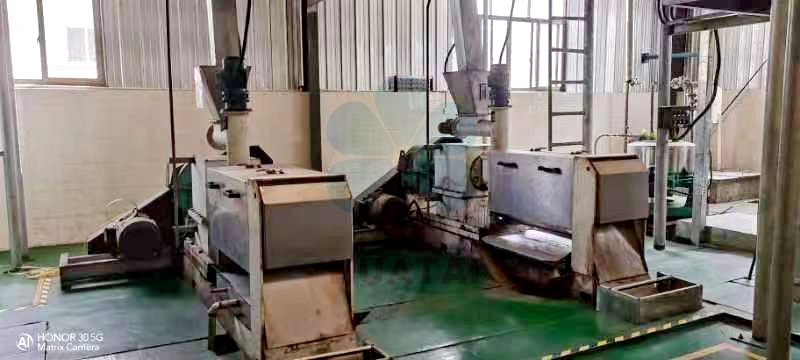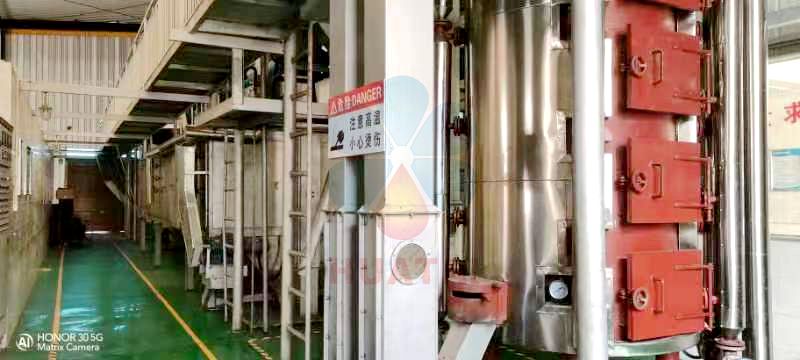Camellia oil has long been regarded as a delicacy from the mountains and is renowned as the "king of oils." With an annual harvest season, fresh camellia seeds have been gathered, and people have begun the oil extraction process. The primary methods for extracting camellia oil include pressing (cold pressing and hot pressing) and solvent extraction. How do the oils produced by these different methods differ?

Solvent extraction involves using a solvent oil (such as No. 6 light gasoline) to fully soak the oil-bearing materials, followed by high-temperature extraction. The process includes "six refinement steps" (de-greasing, degumming, dehydration, decolorization, deodorization, and deacidification). The most notable features of this method are its high oil yield and low production cost, which is why solvent-extracted oil is generally cheaper than pressed oil.
Hot pressing involves first crushing the camellia seeds, then steaming them, and finally forming the seeds into cakes using straw before pressing them with an oil press to extract the oil. Traditional manual pressing in small workshops typically uses hot pressing.
Harvesting and sorting of camellia fruits → camellia seeds → cleaning and removing impurities → shelling → crushing → steaming and roasting → pressing to obtain crude camellia oil → coarse filtration → fine filtration → degumming → deacidification → washing → dehydration → decolorization → deodorization → hot-pressed camellia oil.
(1) Increases oil yield.
(2) High-temperature pressing can easily cause oxidation and polymerization in camellia oil, leading to the decomposition and production of certain peroxides and harmful substances, which damages the nutritional components of the oil.
(3) Can cause protein denaturation, producing trans fatty acids that are harmful to human health.
(4) Contains more impurities, affecting the appearance, color, and intrinsic quality of the oil.
However, this method lacks subsequent filtration steps and produces crude oil. Besides triglycerides, crude oil contains other components such as free fatty acids, phospholipids, oil residue, as well as potential polycyclic aromatic hydrocarbons, aflatoxins, and pesticide residues introduced during planting, harvesting, drying, storage, and other stages.

Cold pressing is a oil production process that has only been introduced by a few large companies in recent years. Cold pressing demands high standards and is typically carried out at temperatures below 60°C, preserving the nutritional components most intact. Since the oil yield of cold pressing is only half that of hot pressing, most cold-pressed oils are priced about 50% higher than hot-pressed oils.
Harvesting and sorting of camellia fruits → camellia seeds → cleaning and removing impurities → shelling and shell-kernel separation → low-temperature pressing → cold-pressed crude camellia oil → coarse filtration → fine filtration → low-temperature crystallization and crystal growing → low-temperature filtration → cold-pressed camellia oil.
(1) Avoids the harmful substances produced by the degradation of oils, sugars, and denaturation of proteins during traditional high-temperature pressing.
(2) Prevents the darker color and burnt flavor often found in traditionally hot-pressed camellia oil.
(3) Avoids direct contact with chemical substances and secondary pollution caused by deacidification, degumming, caustic soda deacidification, and activated clay decolorization in hot-pressed oil production.
(4) Prevents the loss of aromatic components in camellia oil during high-temperature deodorization, effectively preserving the natural active compounds and environmentally friendly substances in the oil.

Cold-pressed oil, as it remains undamaged during processing, generally does not require additives and can be stored for extended periods. It holds a relatively high market value. The cold pressing process is primarily used for high-end edible oils such as camellia oil and olive oil.
Cold pressing is a extraction method specifically suited for certain oil-bearing crops, such as camellia seeds and olives. It fully preserves the nutritional components and active substances of these crops, characterized by the retention of original nutrients, color, and flavor. However, due to its lower oil yield, it is often expensive.
In comparison, hot pressing offers a higher oil yield. It involves roasting and crushing the oil-bearing crops before pressing, resulting in a strong aroma, deeply colored crude oil with sediment, which requires further refining to become a finished product. This method is often used for fragrant oils like peanut oil and sesame oil to retain their distinct flavors.
Huatai Oil Machinery provides good quality oil mill plant, time & fast delivery, perfect after-sale services, and reasonable price, contact us!
Website: https://www.huataioilmachine.com/Copyright @ Henan Huatai Cereals And Oils Machinery Co.,Ltd.
Contact us now